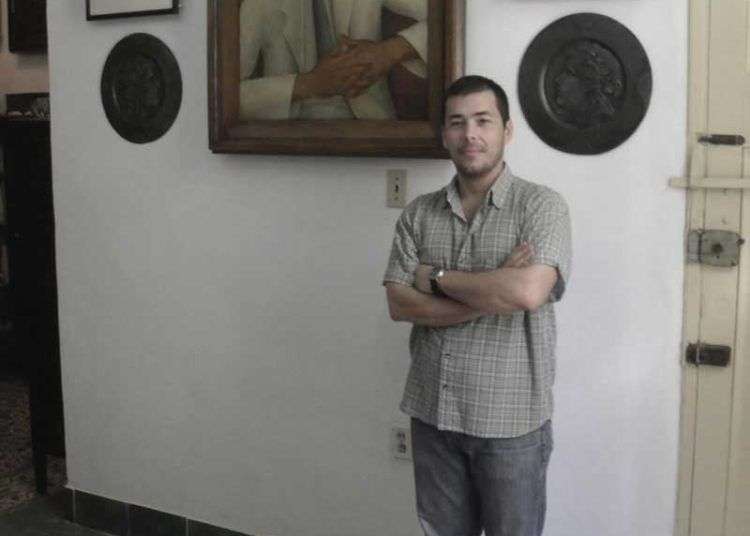José Lezama Lima preferred to write in green ink whenever he had it, he used to do it in his studio-bedroom till late 1960s, in a chair, above which he placed a wooden board; in that room on the walls there three portraits by Mariano Rodriguez, his painter and friend, since the mid-30s.
In the seventies he moved to the living room, and writes in front of the window since the previous room was very warm, in summer it was almost unbearable, also had more light. He used an old Westinghouse fan that he mentioned in Paradiso, his best novel.
Considered one of the greatest writers of the Spanish language and the most important Cuban poet of the twentieth century, Lezama Lima was born in Havana on December 19, 1910.
Israel Mantilla Diaz, director of the Jose Lezama Lima Museum, located on 162 Trocadero Street, Centro Havana municipality, takes us into the real and imaginary world that his life was.
"To José Lezama Lima the cigar rite was important: he said it was his tribute to the first inhabitants of the island; a coffee drinker too, he liked to combine it with the writing. In him, concoctions blended very well, the mysteries of smoke and writing; he almost needed them to create ".
He didn’t have much use for the typewriter, it was his wife who made the transcripts, and before marriage it was probably his mother’s job – Mantilla, who joined the house-museum once he finished his studies in Art History at the University of Havana 1996, says – he preferred manuscripts and wrote his novel Paradiso, mentioned above, as well as poems that way.
On the centenary of his birth in 2010, his house, a museum since 1994 – was declared National Heritage. There is a tradition to celebrate with an activity that, paraphrasing the writer is named Unmentionable Party, verse of his poem Insular Night: invisible gardens that was used in the epitaph on his tomb where the verse reads: the violet sea yearns the birth of the gods, since birth here is a unmentionable party.
In Lezama poetry and everyday life was not differentiated, Mantilla says, he saw life from the side of poetry; he couldn’t set them apart and there were no precise barriers between his personal and professional life, and what he did routinely.
The writer’s speech was baroque, elaborate, he adds, some people who knew him speak of the amazement the way Lezama talked caused them, others rejected it because it was a bit overwhelming all this verbal rhetoric with learned quotations; however, the everyday side of Lezama, the closest, can be seen in the published letters and diaries that allow us to get into the more intimate side of the writer, for example, the letters his friend Jose Rodriguez Feo published are very revealing in this regard; also those he traded with the Spanish philosopher María Zambrano, very deep and heartfelt that give a comprehensive and up-close view of Lezama, and those he sent to one of his sisters that she published in the United States, gives the vision of Lezama within his family.
For Lezama the dining room was very important because for him the dinner ceremony was a series of symbols and cultural connotations that spoke of the importance of the Cuban identity, and saw it not only as organic metabolism, but spiritual as well.
The figure of the mother substitutes the missing father: she was a very strict, educated in the best traditions of Cuban family and was very important to him, no wonder he puts into her mouth a memorable phrase in his novel Paradiso : only what’s hard is exciting, that’s what the mother tells in the novel to the main character Jose Cemi, in which as we know Lezama made biographical extrapolation to the world of literary imagination; in the novel Paradiso in first chapters he tells the family history of the character that is Lezama himself.
An important visit to the house was made by Spanish poet Juan Ramon Jimenez when he did a stint in Havana from 1937-1938; Lezama had an early friendship, very close, especially, from the respect Lezama has earned him, along a very marked veneration and admiration, also frequented the place the Spanish philosopher Maria Zambrana, one of the most important twentieth century philosophical and literary voices in general in Spain, as well as writers Cintio Vitier and Fina García Marruz, among others.
After 1966, when Paradiso is published and Lezama becomes a public and notorious figure, the house was visited by almost all intellectuals, academics specializing in American literature or not, interested in meeting one of the most important figures in Latin American literature of the time .










